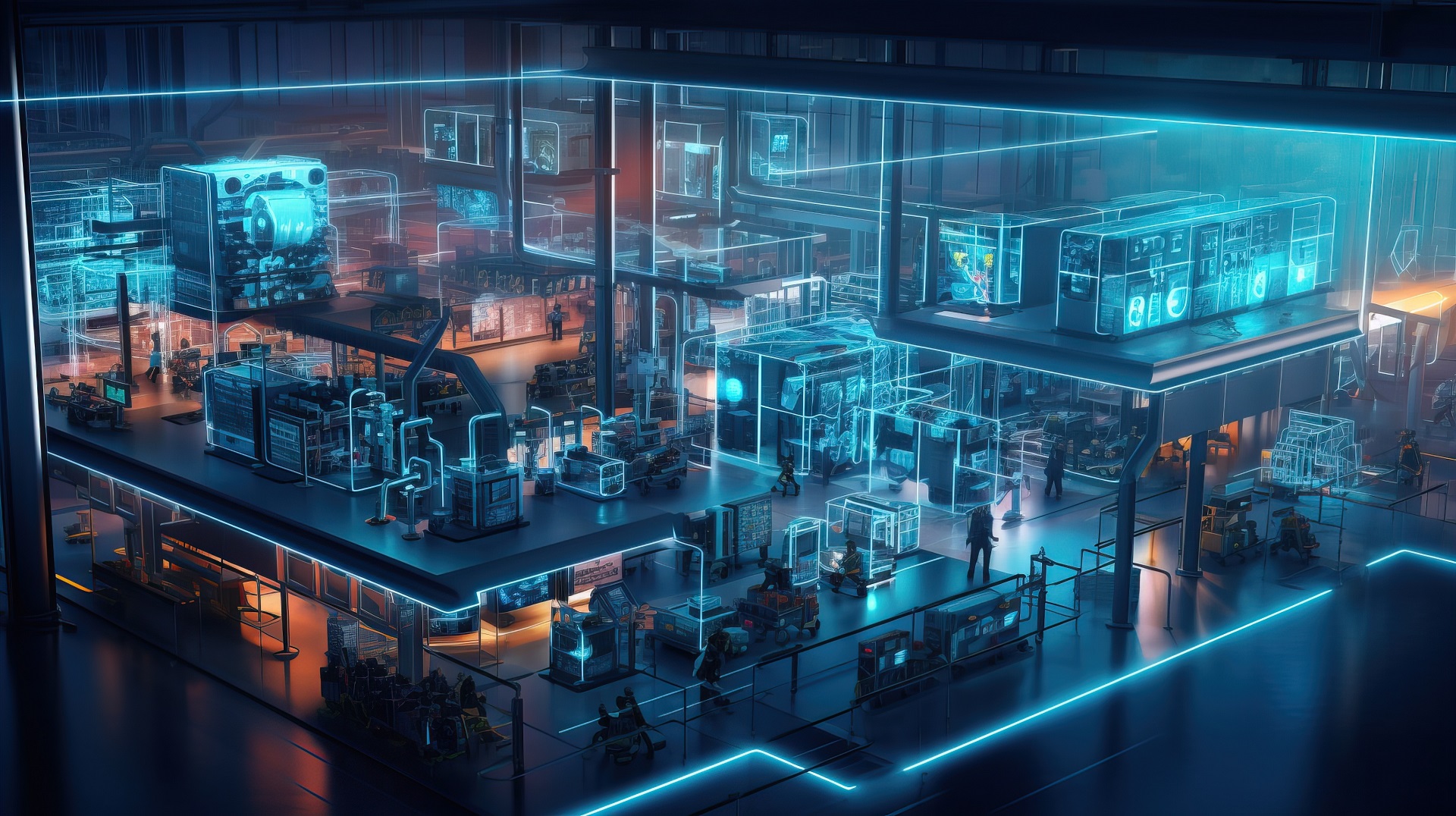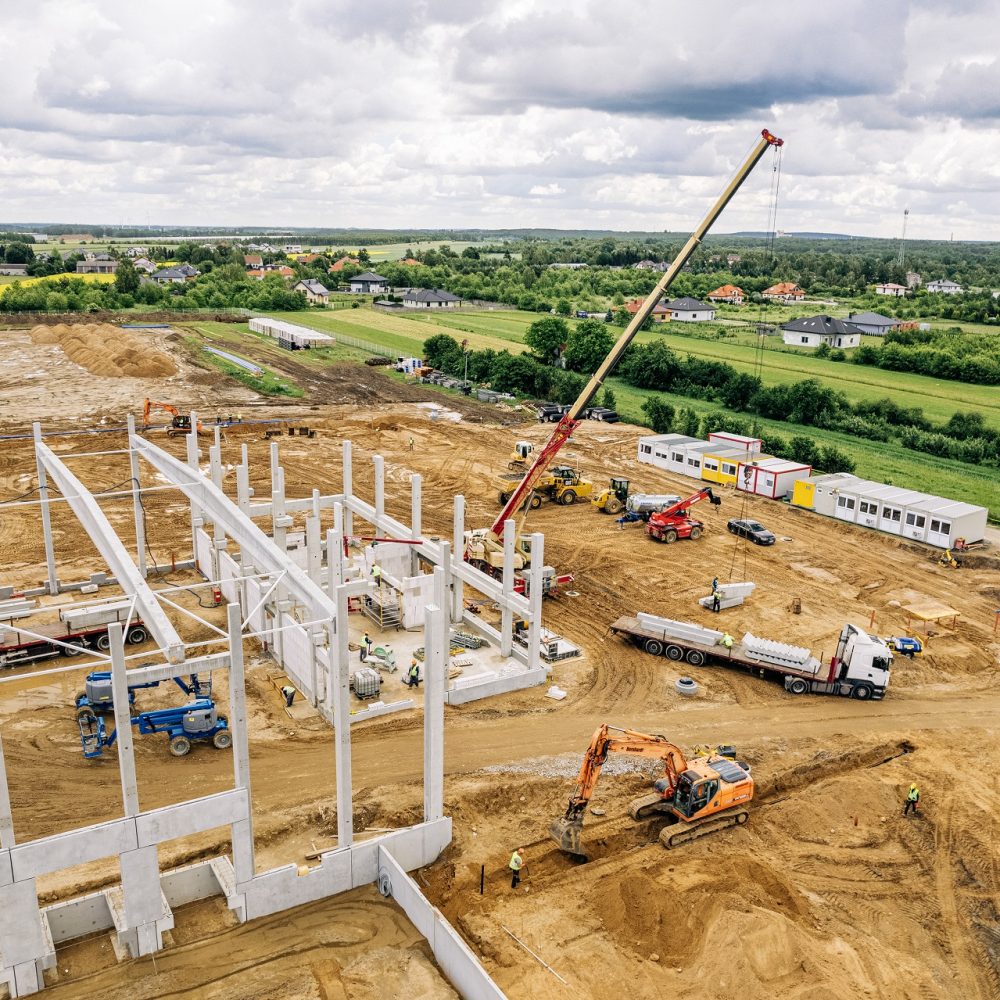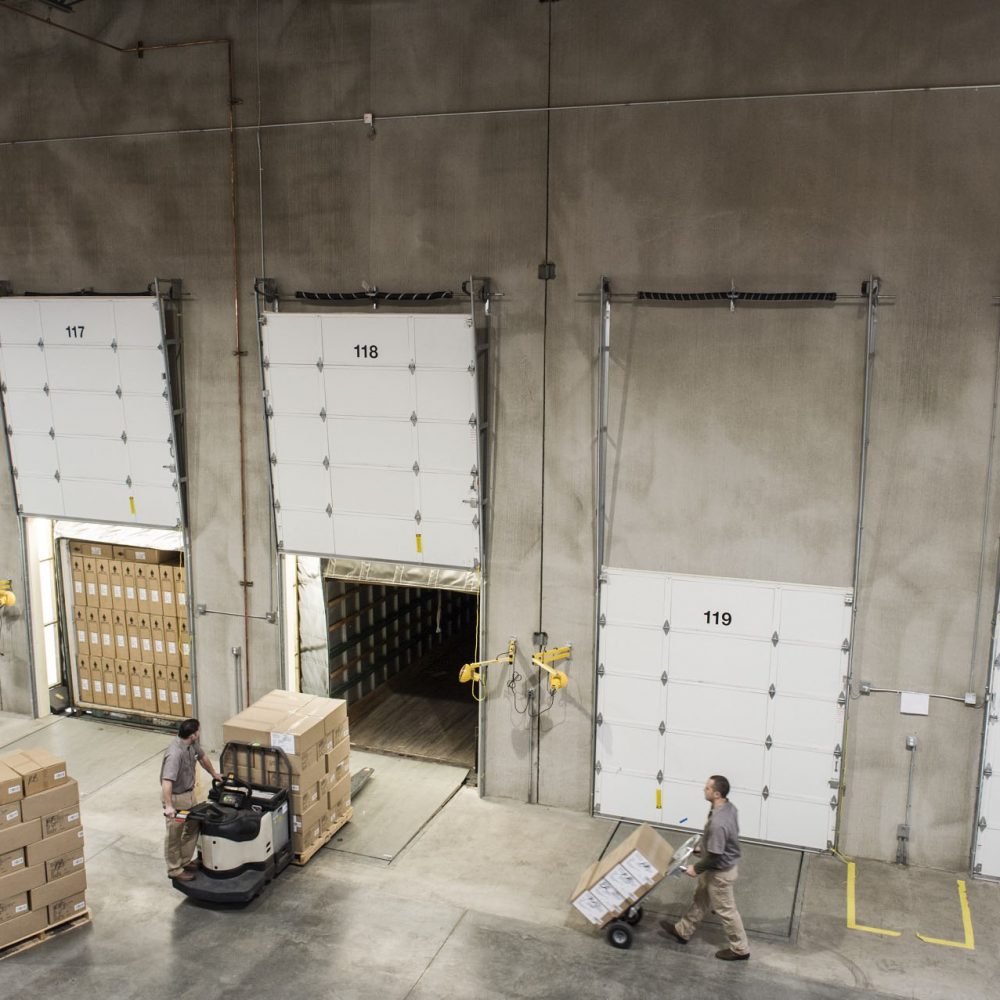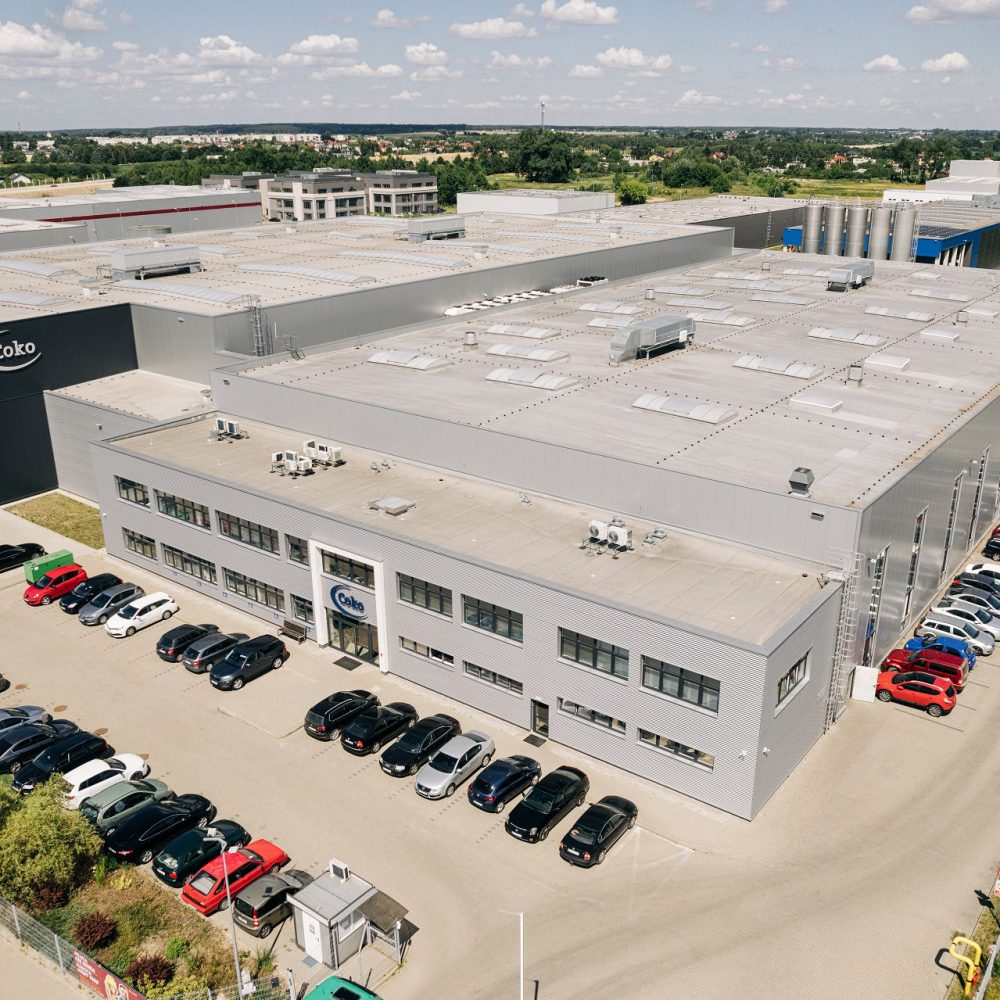
AI powered robots communicating with each other at production lines, able to predict impending machine failure, correcting errors in the process – these are no longer scenes from science fiction films. Today’s industry is experiencing extremely dynamic changes and the use of advanced technologies during the construction and subsequent operation of industrial halls is becoming a key factor in increasing the competitiveness of companies.
Smart technologies in industry – where will they fit in?
Artificial intelligence-based solutions in industry can be found in various areas. However, they all have similar objectives – to increase the efficiency of the company and reduce the costs of day-to-day operations, thereby maximising the revenue generated. Thanks to AI, we can influence, among other things, the efficiency of machines and equipment, reduce the risk of their failure, improve the quality of manufactured products, but also safety or optimise energy consumption, which in many companies generates huge costs.
Artificial intelligence in Polish industry in figures
According to the International Federation of Robotics (IFR), 3100 industrial robots were installed in Poland in 2022. This is the second best result, after a record 2021, when 3,500 such units arrived. IFR publications clearly show that robot installations in Polish industry have been experiencing steady, dynamic growth for almost 10 years. It is certainly a result of the still low saturation – Poland is still far behind the European leaders in this respect. For example, Germany introduced as many as 26,000 units in 2022, 25% of which went to the automotive industry.
In Poland, only 25% of industrial facilities use robots and the market is highly differentiated. We have both innovative and technologically advanced factories and those that are just deciding to transform themselves. And if they are already starting, with what?
Automation and robotisation of production – an introduction to artificial intelligence on the shop floor
Automation and robotisation can confidently be seen as the beginning of a technological transformation in the industrial halls. At the initial stage, robots are programmed to perform work that is too onerous for humans (e.g. by being monotonous), too time-consuming or difficult to perform (e.g. due to the high precision required) or too dangerous. The next step is to apply artificial intelligence to them so that all learned activities are optimised in terms of their execution time (i.e. we influence efficiency) as well as cost. Examples?
AI helps identify the activities most relevant to the efficiency and quality of the production process. An interesting example is the automatic quality control of the manufactured products. AI can detect damage and defects – including those hidden or invisible to the human eye. This is thanks to automated vision systems and detailed analysis of the data collected.
Big data analysis is also ideal for predictive maintenance which is one of the most basic and well-known applications of artificial intelligence in industrial steel or reinforced concrete halls. This is because accurate analysis of machine operation, with particular reference to the intensity of machine use, makes it possible to anticipate impending failure, thus enabling appropriate preventive measures to be taken. And there is probably no worse situation for a manufacturing company than unplanned downtime caused by a sudden breakdown in the machinery fleet.
AI is also playing an increasingly important role in optimising supply chains. There are a number of ways in which AI can help to significantly reduce inventory costs by better managing them over time. By analysing the data, the company is furthermore able to anticipate changes in market demand, problems with the supply of certain raw materials at certain times of the year and many other situations that can have a significant impact on its operations.
But before introducing advanced technology into the technological process, it is worth first ensuring that the industrial halls operate economically on a day-to-day basis. How to do it?
Energy optimisation through AI
Artificial intelligence to the average Pole is mainly associated with robots, with something thinking and intelligent and replacing humans[1]. Many of us are not aware that it can very effectively support manufacturing companies in optimising energy costs. And this is an extremely important role, because energy in industrial halls is used in many areas – to power machinery, HVAC systems (heating, ventilation, air conditioning) or lighting, which is certainly one of the most important items in the electricity bills of industrial facilities.
The high energy consumption of industrial halls is primarily due to their size – the area often reaches tens of thousands of square metres – but also to the fact that work often takes place around the clock. And this requires almost constant illumination of the rooms with artificial light, which costs money. For this reason, modern LED lighting supported by advanced control automation is increasingly being used in production facilities, which adjusts the intensity and continuity of lighting to the requirements in a specific zone, such as production workstations, traffic routes or forklift manoeuvring zones in the loading dock area. But luminaires operating on the addressable DALI system are also used, which, in combination with motion, presence and ambient light sensors, help to significantly reduce electricity consumption.
Solutions that reduce energy demand or supply it from renewable sources, while extremely important, are not the only ones available to manufacturing companies. Soon it will also be crucial to ensure high energy quality and the efficient use of it.
High energy quality through artificial intelligence
All electronic devices, such as lighting systems, HVAC components or highly specialised robotic equipment used in industrial steel halls or buildings constructed in reinforced concrete, introduce numerous disturbances into the network, usually resulting in increased energy consumption and consequently in increased costs. Can this be prevented? Yes, but first it is useful to understand what the energy supplied to the plant consists of.
The actual energy that the trader pays for consists of active power (P) and reactive power (Q) – both of which are generated at power plants and then transmitted to the consumer via the power grid. The first (P) is converted into what is known as utility work. Reactive power (Q), on the other hand, is not consumed, but is necessary for the proper operation of the supplied equipment. It flows back and forth between the power station and the consumer, in the form of magnetic or electric field energy, which puts strain on the source and causes heat loss, but also negatively affects the distribution of active energy and more frequent mains failures. In order to prevent such adverse situations and use energy more efficiently, active filtersmust be used.
What distinguishes active filters from passive filters is their ability to adapt to varying levels of compensated current distortion. The solutions most commonly used in practice are systems based on active parallel filters which are seen by the network as a controlled current source, connected in parallel to the load. By adding the current generated by the active filter to the distorted current drawn by the load, a total current drawn from the grid is obtained in which the distortion is limited. Subsequently, it is possible to eliminate all undesired current components in the mains current that close in the receiver circuit ↔ active filter and do not transfer to the mains.
AI in steel halls or industrial facilities is slowly becoming the standard. Businesses that do not use it will find it difficult to compete in the marketplace – their operations will be much less efficient and much more costly. It is therefore a good idea to start the adventure with AI at the hall construction stage by choosing the right general contractor.
[1] https://managerplus.pl/sztuczna-inteligencja-czyli-co-jak-polacy-rozumieja-ten-termin-wyniki-badania-98434



